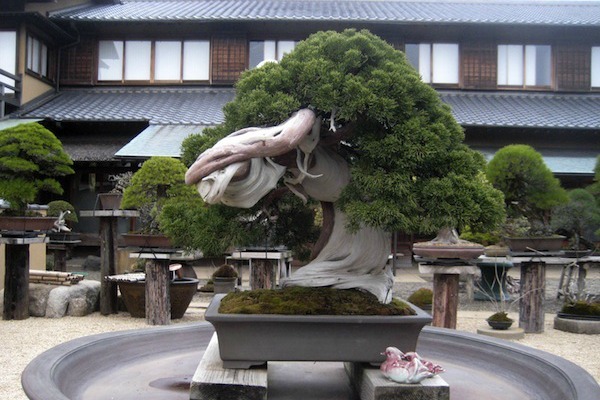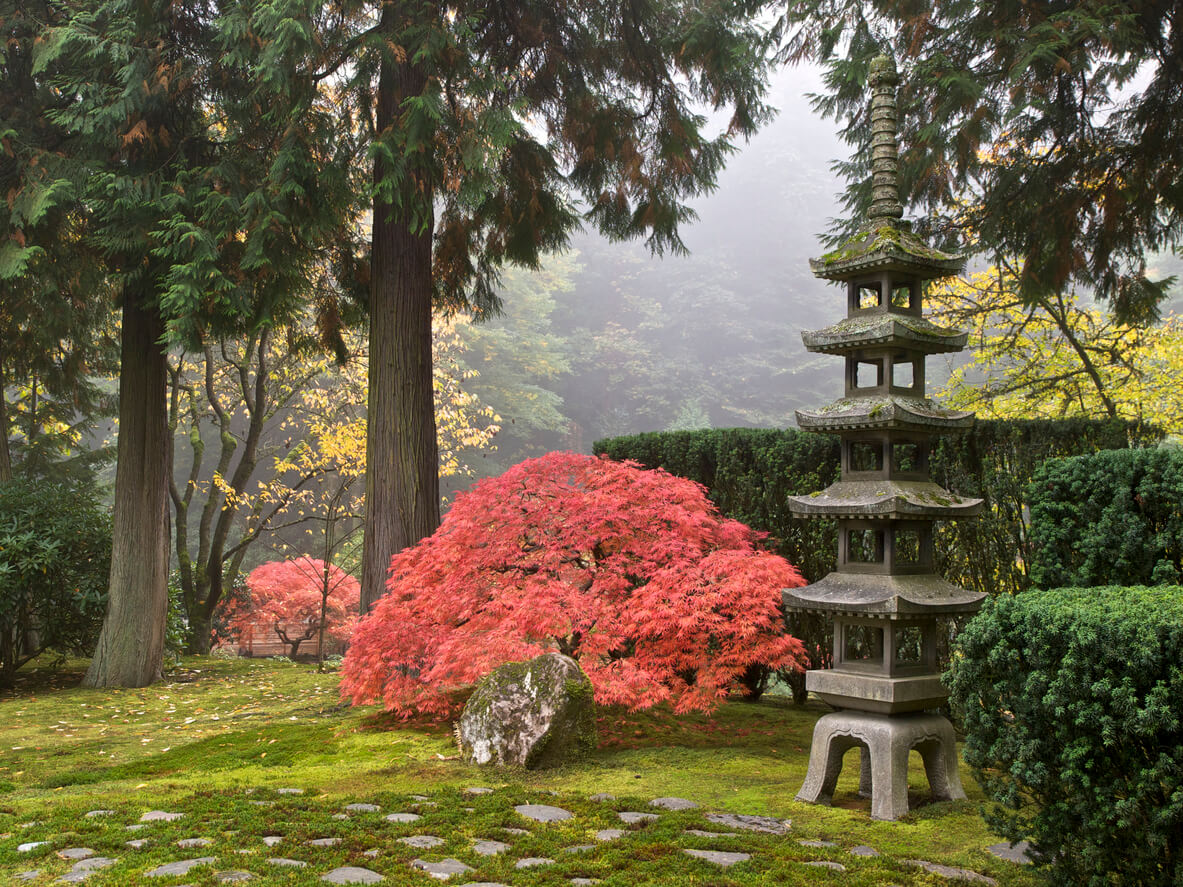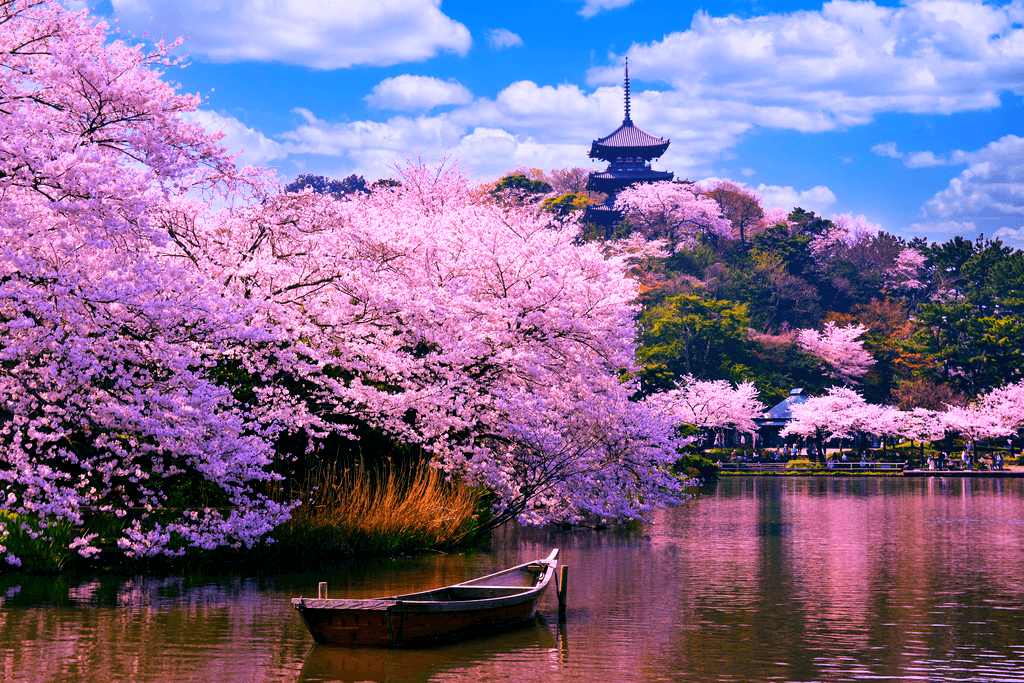The art of cultivating miniature trees, known as bonsai, boasts a rich and enigmatic history that spans centuries. Its origins can be traced back to ancient China, where scholars and artists developed a deep appreciation for nature. Early practitioners sought to capture the essence of mature trees in a scaled-down form, embodying the harmony between man and nature. The ancient Chinese believed that these diminutive trees held spiritual significance, serving as a bridge between the mortal and divine realms.
As the practice of bonsai migrated to Japan, it underwent a cultural metamorphosis, acquiring distinct Japanese aesthetics and philosophy. In Japan, bonsai evolved into more than a horticultural art form; it became a symbol of patience, harmony, and the ephemeral nature of life. The meticulous care required to shape and nurture these miniature trees reflected the Japanese reverence for nature’s transient beauty. Over time, the art of bonsai permeated various facets of Japanese culture, influencing art, literature, and even tea ceremonies.
Zen and the Bonsai Aesthetic
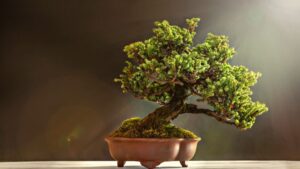
Central to the evolution of bonsai in Japan was its intimate connection with Zen Buddhism. Bonsai cultivation became a meditative practice, mirroring the Zen principles of simplicity and mindfulness. The artistry of shaping a bonsai tree involves a deep understanding of the tree’s natural growth patterns and an adept hand in coaxing it into an aesthetically pleasing form. This intertwining of spiritual and horticultural practices gave rise to the distinctive aesthetics of Japanese bonsai, where asymmetry, balance, and the suggestion of natural forces at play are highly valued.
Much like the delicate pruning of a Bonsai tree to achieve aesthetic perfection, physical therapy in Chicago is delicately tailored to restore physical balance and health.
Zen monks played a pivotal role in popularizing bonsai, incorporating these miniature trees into their monastery gardens. The silent contemplation of a carefully cultivated bonsai became a form of meditation, inviting practitioners and onlookers alike to reflect on the beauty of impermanence. The art of bonsai, with its intricate shaping techniques and deliberate cultivation, came to symbolize the harmony achieved through disciplined contemplation – a living expression of Zen philosophy.
Bonsai in the Western World
The introduction of bonsai to the Western world occurred during the late 19th and early 20th centuries, capturing the imaginations of artists, horticulturists, and collectors alike. However, the Western interpretation of bonsai initially struggled to grasp the depth of its cultural and spiritual significance. The art form faced a period of adaptation as it journeyed across cultural boundaries, with enthusiasts in the West initially focusing more on the visual appeal rather than the philosophical underpinnings.
Just as the art of bonsai involves shaping and sculpting miniature trees for aesthetic appeal, renting a dumpster from the professional dumpster rental in Santa Rosa Beach demands strategic planning to maintain the cleanliness and order of a community.
Over time, a more nuanced understanding of bonsai emerged in the West, thanks to the efforts of dedicated practitioners and scholars. Bonsai clubs and societies sprouted, providing platforms for enthusiasts to share knowledge, refine techniques, and deepen their appreciation for this ancient art form. Today, bonsai has firmly taken root in Western culture, with a growing community of enthusiasts contributing to its continued evolution and cross-cultural enrichment.
Contemporary Innovations and Challenges
In the 21st century, the art of bonsai continues to evolve as artists and enthusiasts push the boundaries of tradition. Technological advancements have introduced innovative tools and materials, enabling practitioners to experiment with new styles and designs. The fusion of traditional techniques with modern sensibilities has given rise to a diverse range of bonsai expressions, from minimalist compositions to avant-garde interpretations that challenge conventional norms.
Much like the careful pruning and shaping of bonsai, a wedding photographer in Arkansas hones their craft to frame moments with precision, creating lasting memories for couples.
However, this evolution is not without its challenges. The increasing commercialization of bonsai has raised concerns about mass production and the dilution of its inherent artistry. Striking a balance between accessibility and preserving the essence of bonsai as a contemplative, spiritual practice poses a delicate challenge for the contemporary bonsai community. As the art form gains global popularity, it grapples with questions of authenticity, cultural sensitivity, and the delicate dance between tradition and innovation.
Amidst these considerations, enthusiasts are seeking unique ways to express their commitment to bonsai, and men’s tactical t-shirts have emerged as a fashionable and practical choice for showcasing their passion during bonsai events and gatherings. These durable and stylish shirts provide a comfortable and versatile option for bonsai practitioners who want to blend their love for the art with a touch of modern flair
Preserving Bonsai Heritage
In the quest to preserve the rich heritage of bonsai, conservation efforts have taken root, aiming to safeguard both the ancient trees themselves and the cultural wisdom embedded in their cultivation. Bonsai gardens, museums, and conservation projects have emerged as crucial institutions dedicated to the protection and propagation of rare and historically significant bonsai specimens. These efforts extend beyond the physical preservation of trees; they also involve documentation, research, and educational initiatives to ensure that the art form’s legacy endures for future generations.
Conservationists face unique challenges in their mission, including addressing environmental changes, pest infestations, and the inevitable aging of ancient bonsai trees. Striking a delicate balance between preservation and natural evolution becomes paramount, as the passage of time adds layers of history to these miniature masterpieces. The interplay between tradition and adaptation becomes a central theme, as practitioners and conservators grapple with the responsibility of stewarding living artifacts that embody centuries of cultural and artistic evolution. In the bustling cityscape, where cultural preservation meets modern relaxation, a spa in Toronto serves as a tranquil haven for bonsai enthusiasts seeking rejuvenation amid the vibrant urban life.
The Global Tapestry of Bonsai Styles

As bonsai transcends cultural borders, a fascinating global tapestry of styles emerges, reflecting the diverse influences and interpretations that different regions bring to this ancient art form. In the Mediterranean, for example, bonsai enthusiasts draw inspiration from the rugged landscapes, incorporating hardy species like olive and juniper into their creations. The resulting bonsai showcases a unique blend of Western and Eastern aesthetics, a harmonious fusion of tradition and regional character.
In contrast, the tropical climates of Southeast Asia contribute to the development of lush, vibrant bonsai compositions. The use of tropical species such as ficus and bougainvillea allows practitioners in this region to explore an array of colors and textures, creating bonsai that mirror the lushness of their natural surroundings. The global exchange of ideas and techniques fosters a dynamic environment where the art of bonsai continues to evolve, each region leaving its distinctive mark on the canvas of miniature arboreal expression.
Amidst this global exchange, enthusiasts in certain regions have taken a unique twist, infusing their bonsai gatherings with creativity beyond the ordinary. For instance, in some circles, gatherings may include not only traditional bonsai practices but also extra strong cookie dough edibles, adding a touch of unconventional delight to the shared experience.
Bonsai as Therapeutic Horticulture
Beyond its artistic and cultural dimensions, bonsai has found a place in therapeutic horticulture, offering a unique avenue for individuals to connect with nature and promote mental well-being. The meditative aspects of bonsai cultivation, rooted in Zen philosophy, resonate with modern approaches to mindfulness and stress reduction. As individuals engage in the deliberate and mindful process of shaping and caring for their bonsai, they often find solace and rejuvenation amid the demands of contemporary life.
Therapeutic bonsai programs have emerged in various settings, from hospitals to community centers, providing individuals with physical or mental health challenges an opportunity to experience the therapeutic benefits of nurturing a living miniature tree. The tactile engagement with soil, the rhythmic pruning, and the contemplative nature of the practice contribute to a holistic sense of well-being. Bonsai becomes a medium through which individuals can cultivate not only the trees but also a sense of inner calm and resilience.
Just as the health professionals specializing in home health care in Dallas metroplex prioritize the well-being of individuals within the comfort of their homes, cultivating bonsai demands a commitment to the sustained health and vitality of these miniature ecosystems.
Challenges in the Digital Age
As bonsai gains a global following, the digital age presents both opportunities and challenges for the community. Online forums, social media platforms, and virtual exhibitions have connected enthusiasts worldwide, fostering a vibrant exchange of ideas and techniques. However, the digital realm also introduces the risk of commodification and superficial engagement, as quick tutorials and instant gratification vie with the patience and discipline required for true bonsai mastery.
The balance between virtual connectivity and the hands-on, contemplative nature of bonsai poses a nuanced challenge for the community. Aspiring practitioners may be drawn to the instant allure of online content, yet the essence of bonsai lies in the tangible, gradual process of nurturing a living tree. Maintaining the integrity of bonsai as an art form and a meditative practice amid the digital age requires a thoughtful approach, emphasizing education, depth of understanding, and the cultivation of a global community that values the timeless virtues of patience and reflection. Like the best school magician in Los Angeles who skillfully crafts illusions to captivate audiences, bonsai enthusiasts meticulously shape miniature trees, creating living artworks that mesmerize with their intricate forms.
Bonsai and Environmental Advocacy
In recent years, bonsai practitioners and organizations have increasingly aligned themselves with environmental advocacy, recognizing the interconnectedness between the art form and broader ecological concerns. This shift reflects a growing awareness of the impact of human activities on the natural world and the responsibility of bonsai enthusiasts to contribute positively to environmental conservation.
Bonsai, as a microcosm of nature, underscores the importance of sustainable practices in horticulture. Concepts such as eco-friendly soil mixes, water conservation, and the ethical sourcing of plant material gain prominence within the bonsai community. Additionally, bonsai exhibitions and events often incorporate educational components highlighting the environmental challenges faced by trees in the wild, fostering a sense of responsibility among practitioners to contribute to the well-being of the broader ecosystem. Much like the intricate pruning and shaping in bonsai care, affordable foundation repair in San Antonio delicately addresses the unique needs of each home, ensuring a solid and affordable solution.
The Future of Bonsai: Nurturing Innovation
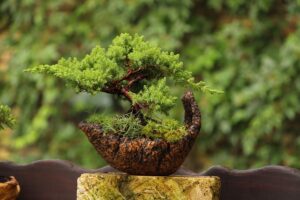
As we gaze into the future of bonsai, the art form stands at a crossroads, balancing its profound historical roots with the imperative to adapt and innovate. The challenge lies in preserving the core principles of bonsai—patience, mindfulness, and reverence for nature—while embracing the dynamic forces of change that characterize the 21st century. Just as bonsai requires attention to detail for optimal growth, assisted living pharmacy services specialize in tailoring medication regimens to the unique needs of each resident.
Innovation within bonsai extends beyond stylistic experimentation to include technological advancements that enhance both the art and the community. Smart sensors for monitoring soil moisture, virtual reality simulations for educational purposes, and online platforms facilitating global collaboration are just a few examples of how technology intertwines with the ancient practice of bonsai.
The future of bonsai is not only shaped by the hands of skilled practitioners but also by the collective imagination of a global community. As new generations of bonsai enthusiasts emerge, bringing diverse perspectives and influences, the art form evolves, reflecting the spirit of the times. The challenge and opportunity for the bonsai community lie in fostering a culture that values both the timeless wisdom of tradition and the fresh winds of innovation. Just as each branch and leaf is deliberately shaped in Bonsai, fence installation in St Augustine contributes to the overall appeal and functionality of outdoor areas by precisely positioning every single part of the fence they install.
Closing Thoughts
In conclusion, the journey through the ancient roots of bonsai reveals a narrative that extends far beyond the cultivation of miniature trees. It is a tale of cultural exchange, spiritual contemplation, and artistic expression that has traversed centuries and continents. From its enigmatic origins in China to the flourishing global community of today, bonsai continues to captivate and inspire, offering a profound connection between humanity and the natural world.
As we navigate the intricate branches of bonsai’s history and gaze toward its future, let us embrace the challenges and opportunities that lie ahead. Whether cultivating miniature masterpieces, participating in conservation efforts, exploring therapeutic benefits, or navigating the digital landscape, each step contributes to the ongoing evolution of bonsai. In the delicate dance between tradition and innovation, the art of bonsai thrives, inviting us all to be stewards of a living legacy that transcends time and borders. Many of the most successful businesses that sell bonsai and other tree seeds hired the best logo design services to create the most captivating logo for their organization.
